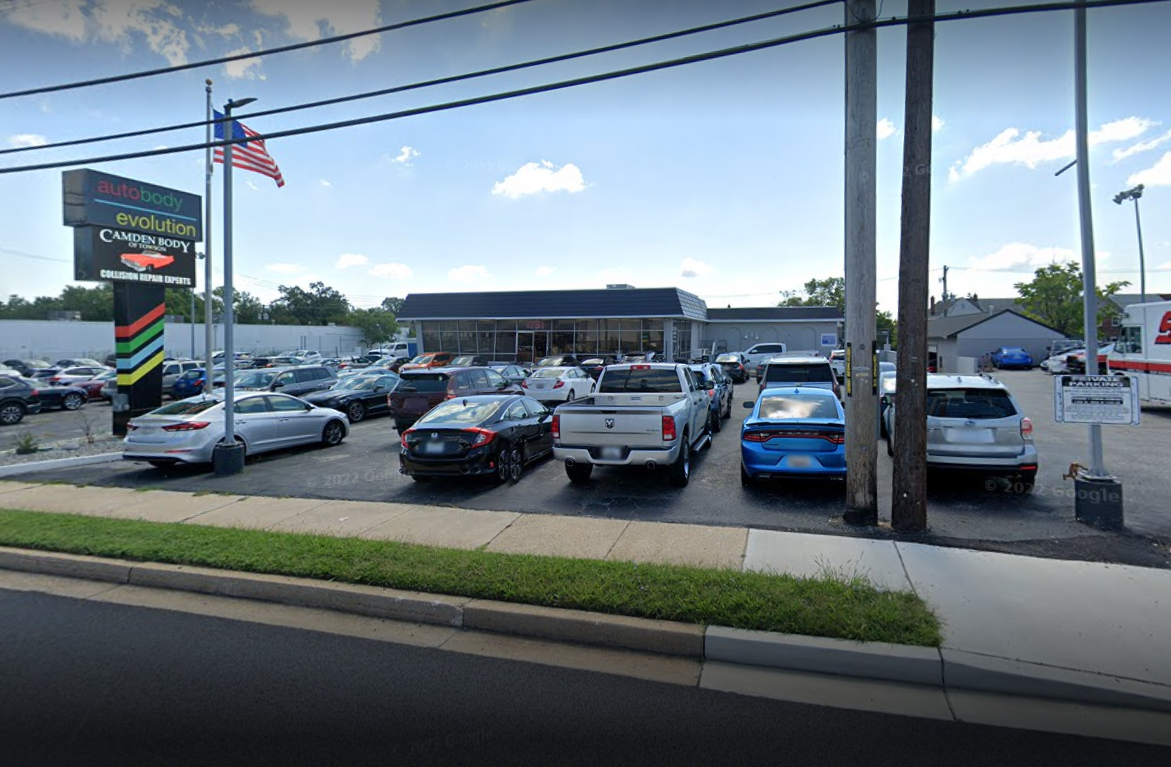LOCAL EXPERTS TO CARE FOR YOUR NEEDS
Getting you back to GO.
DRIVEN WITH CARE
Our attentive team is dedicated to getting you back on the road and back to your life
Autobody Evolution takes an empathetic and caring approach to customer service. We understand just how stressful a collision can be, and we are here to ease this burden. Let our local team of friendly professionals be your top supporter and repair resource.

Leave your worries with us. We'll take care of the rest.
Autobody Evolution - Catonsville
5649-1 Baltimore National Pike, Catonsville, MD 21228Autobody Evolution - Essex
1400 Eastern Blvd., Essex, MD 21221Autobody Evolution - Littlestown
215 M St., Littlestown, PA 17340Autobody Evolution - Parkville (Camden)
1751 East Joppa Rd, Parkville, MD 21234Autobody Evolution - Towson
2 Ensor Ave., Towson, MD 21204Autobody Evolution | A COLLISIONRIGHT COMPANY
Our services
Collision Repair
Autobody Evolution offers comprehensive accident repair services that will meet your satisfaction. Whatever the damage, our certified technicians use the latest technology and manufacturer parts to restore your vehicle to its original condition.
Diagnostics and Calibrations
As vehicles become more complex, diagnostic tests help pinpoint the exact issue, and safety sensors need recalibration to ensure they work as intended. Our expert technicians focus on repairing your vehicle holistically, ensuring all mechanical and safety systems function properly.
Estimate & Claim Guidance
From providing a straightforward, transparent estimate to coordinating the claim with your insurance company, our team of friendly, knowledgeable professionals will guide you through the process.
Non-Collision Damage Repair
Not all auto damage is caused by a wreck. We can fix issues caused by hail storms, vandalism, and anything else life throws your way. Our detail-oriented technicians will get your vehicle looking new before you know it.
Paint Services
Whether you need paint touch-ups after an accident or just want to spruce things up, our team can meet your personalized needs. Let us transform your beloved vehicle with a fresh coat of expertly applied paint.
FUELED BY CARE
Committed to quality repair and customer care
With technical expertise and attentive customer service, we’re here to help. We’ll be your personal champion every step of the repair process, until we get you back to your normal routine.
High Quality, Guaranteed
We back our quality with a lifetime guarantee as long as you own your vehicle.
OEM Certified
Proving our dependability by requiring all CollisionRight shops to have advanced certification from the top industry associations and automotive manufacturers.
Customer Satisfaction
Our mission is to get you back on the road with ease. We do this through care and efficiency.
A COLLISIONRIGHT COMPANY
Our local expertise is backed by the scale, resources, and efficiencies of a large, national company
This supports our superior customer care and repair services.
80k+
vehicles repaired/yr
30+
Trusted Brands
1,400+
dedicated team members
90+
locations
QUALITY REPAIRS BY CERTIFIED PROFESSIONALS
Doing it right, the first time, every time to restore your vehicle’s safety and performance
You can drive with the peace of mind knowing that our team is certified by the world's leading auto manufacturers and will use the highest quality parts and equipment for each auto body repair. We meet your needs in a timely manner while delivering expert results.
Our Pledge To You
- 1We will address your collision repair needs with
compassion and quickly get you back to your daily routine. - 2We will keep you informed on the status
of your repair. - 3We will ensure your car is fixed right the first time
by our highly trained and certified technicians. - 4We will return your vehicle on time —
clean, safe and ready to go.